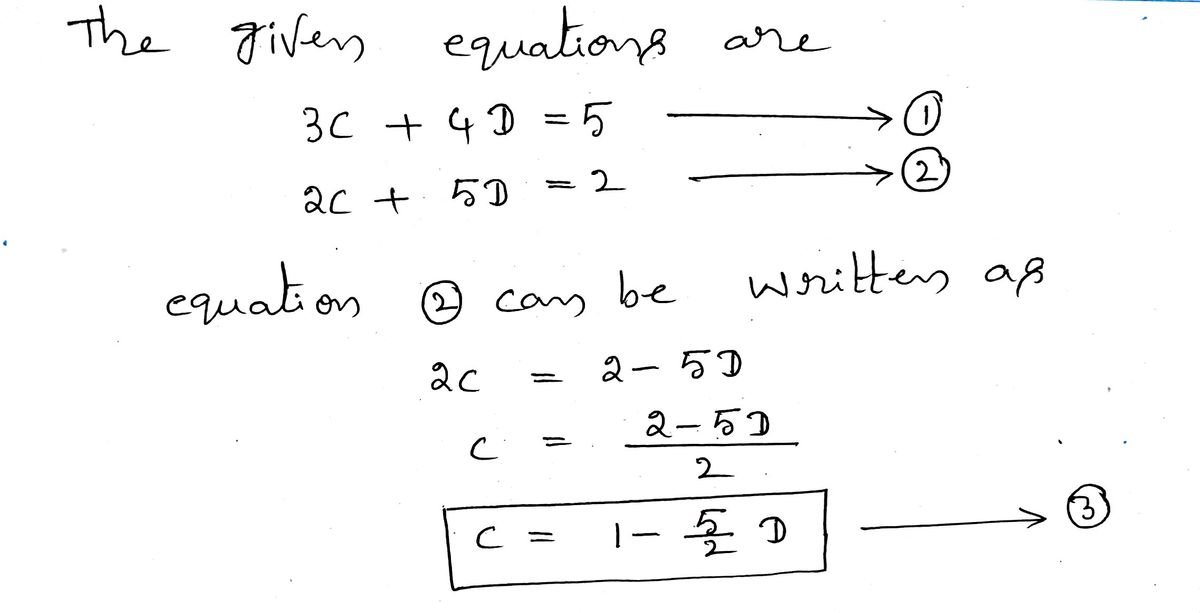Part D - Isolating a Variable with a Coefficient In some cases, neither of the two equations in the system will contain a variable with a coefficient of 1, so we must take a further step to isolate it. Let's say we now have • 3C + 4D = 5 • 2C + 5D = 2 None of these terms has a coefficient of 1. Instead, we'll pick the variable with the smallest coefficient and isolate it. Move the term with the lowest coefficient so that it's alone on one side of its equation, then divide by the coefficient. Which of the following expressions would result from that process? C =} - D C =1-D D=-C %3D - }C D = Submit Previous Answers Correct
Part D - Isolating a Variable with a Coefficient In some cases, neither of the two equations in the system will contain a variable with a coefficient of 1, so we must take a further step to isolate it. Let's say we now have • 3C + 4D = 5 • 2C + 5D = 2 None of these terms has a coefficient of 1. Instead, we'll pick the variable with the smallest coefficient and isolate it. Move the term with the lowest coefficient so that it's alone on one side of its equation, then divide by the coefficient. Which of the following expressions would result from that process? C =} - D C =1-D D=-C %3D - }C D = Submit Previous Answers Correct
Related questions
Question
I do not understand how to solve for C and D.

Transcribed Image Text:Part D - Isolating a Variable with a Coefficient
In some cases, neither of the two equations in the system will contain a variable with a coefficient of 1, so we must take a
further step to isolate it. Let's say we now have
3C + 4D = 5
• 20 + 5D = 2
None of these terms has a coefficient of 1. Instead, we'll pick the variable with the smallest coefficient and isolate it. Move
the term with the lowest coefficient so that it's alone on one side of its equation, then divide by the coefficient. Which of the
following expressions would result from that process?
O C=} - D
3
C =1-D
O D=-C
O D= -}C
3
4
4
Submit
Previous Answers
Correct

Transcribed Image Text:Part E - Solving for Two Variables
Now that you have one of the two variables in Part D isolated, use substitution to solve for the two variables. You may want
to review the Multiplication and Division of Fractions and Simplifying an Expression Primers.
Enter the answer as two numbers (either fraction or decimal), separated by a comma, with C first.
• View Available Hint(s)
ΑΣφ
?
C, D =
Submit
Request Answer
Expert Solution
Step 1

Trending now
This is a popular solution!
Step by step
Solved in 3 steps with 3 images
